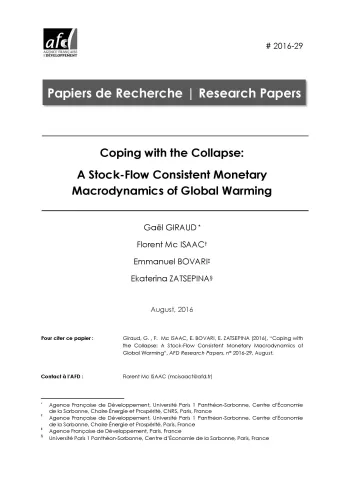Share the page
Coping with the Collapse: A Stock-Flow Consistent Monetary Macrodynamics of Global Warming
Published on

This paper presents a macroeconomic model of endogenous growth that enables us to take into consideration both the economic impact of climate change and the pivotal role of private debt. Using the Goodwin-Keen approach, based on the Lotka-Volterra logic, we couple its nonlinear dynamics with abatement costs. Moreover, various damage functions à la Nordhaus and Dietz-Stern reflect the loss in final production due to the temperature increase caused by the rising levels of CO2 emissions. An empirical estimation of the model at the worldscale enables us to simulate plausible trajectories for the planetary business-as-usual scenario. Our main finding is that, even though the short-run impact of climate change on static economic fundamentals may seem prima facie rather minor, its long-run dynamic consequences may lead to an extreme downside. Under plausible circumstances, global warming forces the private sector to leverage in order to compensate for output losses; the private debt overhang may eventually induce a global financial collapse, even before climate change could cause serious damage to the production sector. Under more severe conditions, the interplay between global warming and debt may lead to a secular stagnation followed by a collapse in the second half of this century. We analyze the extent to which slower demographic growth or higher carbon pricing allow a global breakdown to be avoided. The paper concludes by examining the conditions under which the +1.5°C target, adopted by the Paris Agreement (2015), could be reached.
Useful Information
-
Authors
-
Emmanuel BOVARI, Ekaterina ZATSEPINA, Gaël Giraud, MCISAAC
-
Edition
-
29
-
Number of pages
-
58
-
ISSN
-
2492-2846
-
Collection
-
Research Papers
